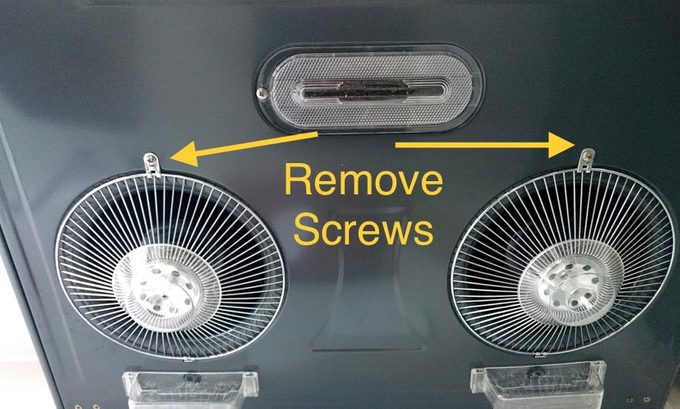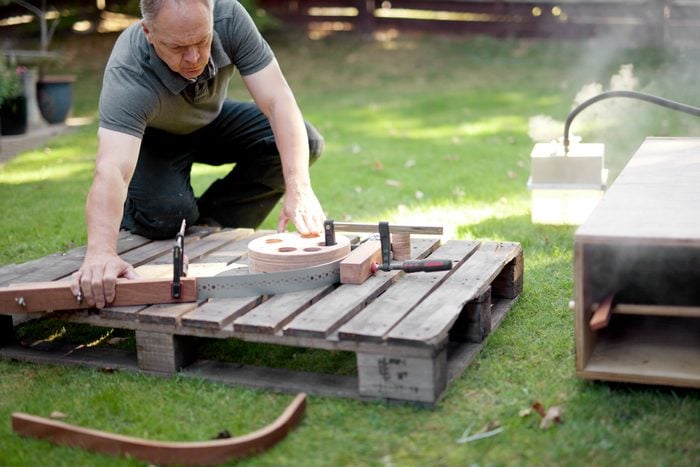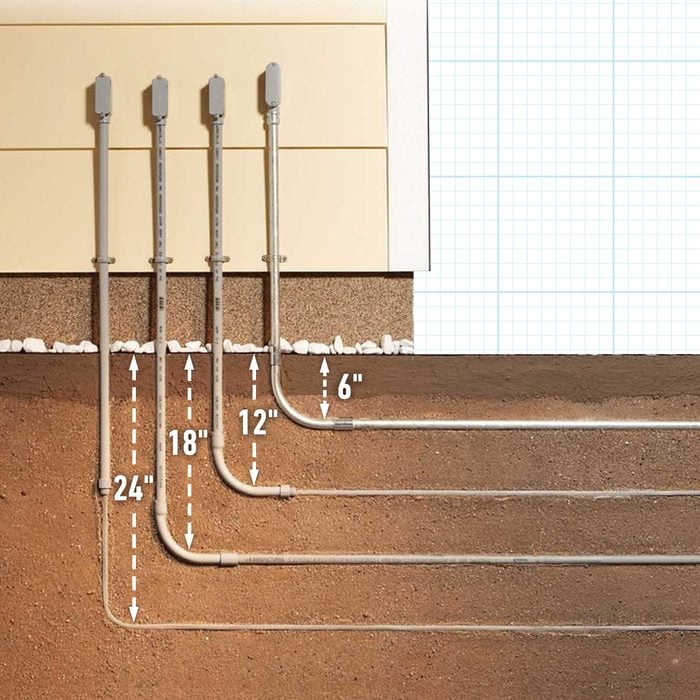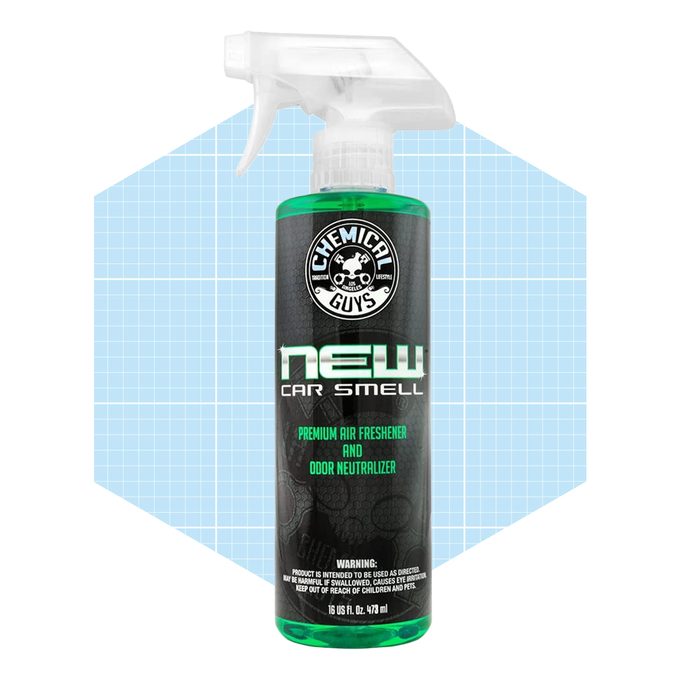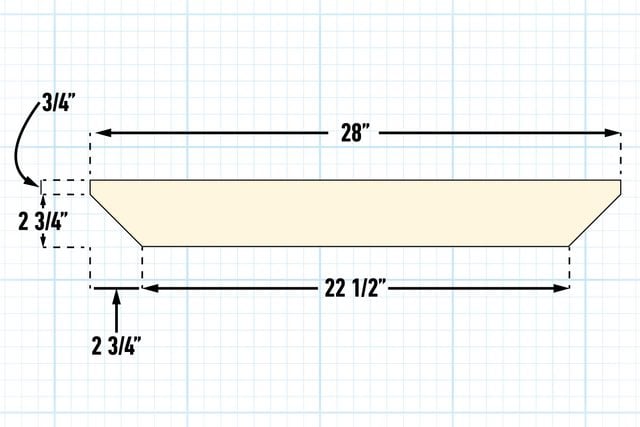In August 2022, the Energy Efficient Home Improvement Credit and the High Efficiency-Electric Home Rebate Program became law, both part of the landmark Inflation Reduction Act (IRA). While the titles are a mouthful, the programs contain a serious set of incentives to green up your home.
“There has never been a better time to make energy-efficient improvements to your home,” says Christian Mathers, co-founder of Epic Generators. “Much of the law is directed toward combating climate change through tax credits, and you win with ongoing savings on energy bills.”
Some of the federal incentives are available immediately, while others kick in on January 1, 2023. Still more will be rolled out by state energy offices, local governments and nonprofit organizations over the next 12 to 24 months.
Here are some of the upgrades enabled by the act, and how to take advantage of them. For more information and to understand how the IRA applies to your income bracket, consult the government’s official site, Rewiring America and The Switch is On, which also has an incentive calculator based on your zip code.
Summary of the High Efficiency-Electric Rebates Based on Income
The IRA allocates $4.275 billion to state energy offices to develop and administer a new high-efficiency electric home rebate program. An additional $225 million is available for tribal governments. These funds are reserved for households with a total income of 150 percent or less of their area’s median income (AMI).
Low-income households (LMI, less than 80 percent of AMI) are eligible to receive a rebate equal to 100 percent of the project cost, up to the caps listed below. Households between 80 percent and 150 percent AMI are eligible for rebates of 50 percent of project costs, up to these caps.
The law also provides separate rebate amounts for income-eligible multifamily buildings. A few of the notable rebates provide up to:
- $1,750 for a heat pump water heater;
- $8,000 for an HVAC heat pump;
- $840 for an electric (including induction) cooktop, stove, range, oven, or heat pump clothes dryer;
- $1,600 for air sealing, insulation and ventilation;
- $2,500 for electric wiring;
- $4,000 for an electric load center upgrade.
There is a $14,000 maximum benefit per home, plus an additional $500 for qualified contractor incentives.
Revamped Home Efficiency Tax Credits
Besides these direct consumer rebates, the IRA reauthorized and revised the longstanding Efficiency Tax Credits.
Starting in January 2023 and each year through 2032, eligible households can claim a tax credit of 30 percent of the cost of qualified energy efficiency projects, up to $1,200 per year. These include weatherization and building envelope improvements, as well as appliances and other energy measures, subject to the following caps:
- $600 for Energy Star exterior windows and skylights;
- $250 for Energy Star exterior doors (or $500 limit for all exterior doors);
- $600 for the highest efficiency tier for central air conditioners and other qualified gas, propane or electric HVAC systems, and electrical upgrades that enable the energy-efficiency upgrade;
- $150 for home energy audits;
- $2,000 for electric heat pumps and heat pump water heaters, biomass stoves and boilers. The tax credit for installing heat pumps or heat pump water heaters does not count towards the annual $1,200 limit.
“This new annual limit, which will be available for the next decade, means you can plan for multiple upgrades and improvements over time, and spread the costs and incentives out according to your home energy budget,” said Sara Baldwin, director of electrification with Energy Innovation.
Home Energy Audit
If you’re unsure where to start, ask your your power company or a local professional for a home energy audit to learn how to eliminate energy leaks and save money. Expect to pay between $200 and $600; as mentioned above, you’ll get a $150 tax credit.
Solar and Battery Storage Tax Credits
If you want to install a solar energy system, you can take immediate advantage of a 30 percent tax credit on your new system.
“Unlike other IRA benefits, there’s no cap on how much you can spend,” says Mallory Micetich, a home expert at Angi. “And the savings don’t stop there. You’ll also save between $10,000 and $30,000 on energy costs over the lifespan of your solar panels.”
Heat Pump HVAC
Heat pumps are the new rage for HVAC systems, water heaters and clothes dryers.
“This is not some crazy, complicated technology,” says Panama Bartholomy, director of the Building Decarbonization Coalition. “A heat pump HVAC is basically just an air conditioner that can also run in reverse, and a heat pump water heater is just a tank of water with a refrigerator on top.”
Heat pumps can cut your energy costs by as much as 50 percent, but run around $10,000 to $18,000. As noted above, there will be a $2,000 tax credit for those starting in January, and new rebates for income-qualified homes. Currently, there is also a 30 percent incentive for geothermal-type heat pumps.
Heat Pump Water Heaters
There is also a $2,000 tax credit that can be used toward a heat pump water heater. Most cost less than that, and installation is a relatively easy DIY, especially Rheem’s new 120V model.
“Depending on your quoted installation costs, you could get a new heat pump water heater for free or close to free and save hundreds per year, since they use one-third of the energy of traditional water heaters,” says Mathers.
Lower-income households that may not have a large enough tax liability can instead apply the $1,750 rebate to reduce the upfront costs of a heat pump water heater.
Electric Panel Upgrade
In some cases, these energy-efficient technologies require electrical upgrades. Starting in January, eligible homes can use the high-efficiency tax credit for panel upgrades and wiring. And low-income households can take advantage of the $4,000 rebate for electrical panels and $2,500 for wiring (or half that for moderate-income households).
Weatherization
Starting in January 2023, a $1,200 tax credit can be used annually for adding insulation.
“Once the credit, yearly savings and your comfort are factored in, this is a must-do improvement,” says Mathers. “New or additional insulation, especially in the attic, makes all the difference.”
The Environmental Protection Agency estimates the average homeowner will save 15 percent of heating and cooling costs, more in colder climates. LMI households can use the $1,600 incentive for weatherization.
Exterior Doors
A credit of $250 is currently available for replacing an ill-fitting or inefficient door with an Energy Star compliant one. There’s a $500 cap for multiple exterior doors.
Appliances
Starting in January 2023, low-income households can get an $840 credit toward an electric stove. Besides lowering greenhouse gas emissions and improving energy efficiency, this can also improve your health.
“There’s an increasing body of knowledge about the indoor air quality impacts of cooking with gas, like nitrogen oxides, carbon monoxide, even formaldehyde being detected,” says Bartholomy. “This is going to be a real help in particular, since poorly ventilated kitchen spaces are often in poorer communities. So it’s great to see some money there.”
Whole Home Performance
This one is more complex and some details still need to be worked out. This is another program administered by state energy offices, but when it eventually goes into effect it will look roughly like this:
Single-family homes that achieve 20 to 35 percent energy savings over a certain period of time, through energy efficiency measures, will be eligible for a rebate of 50 percent of the project cost, up to $2,000.
Homes that achieve 35 percent energy savings will be eligible for a rebate worth 50 percent of the project costs up to $4,000. For low-to-moderate income households, these amounts increase. Households achieving 20 to 35 percent energy savings can get 80 percent of project costs up to $4,000, and 35 percent energy savings will get 80 percent up to $8,000.
Incentives are also available for multifamily building owners, including those with low- to moderate-income residents. However, this rebate may not be combined with the high-efficiency electric home rebate program for the same single upgrade.
DIY vs. Hiring Pros
Many of these incentives are available for DIYers, but Bartholomy says some may require you to work with a professional installer. If you do, he recommends finding one affiliated with or trained by a manufacturer. “They will say something like Mitsubishi-affiliated or a Fujitsu-affiliated installer,” he says.
Article source here:
How To Take Advantage of the Incentives in the Inflation Reduction Act
